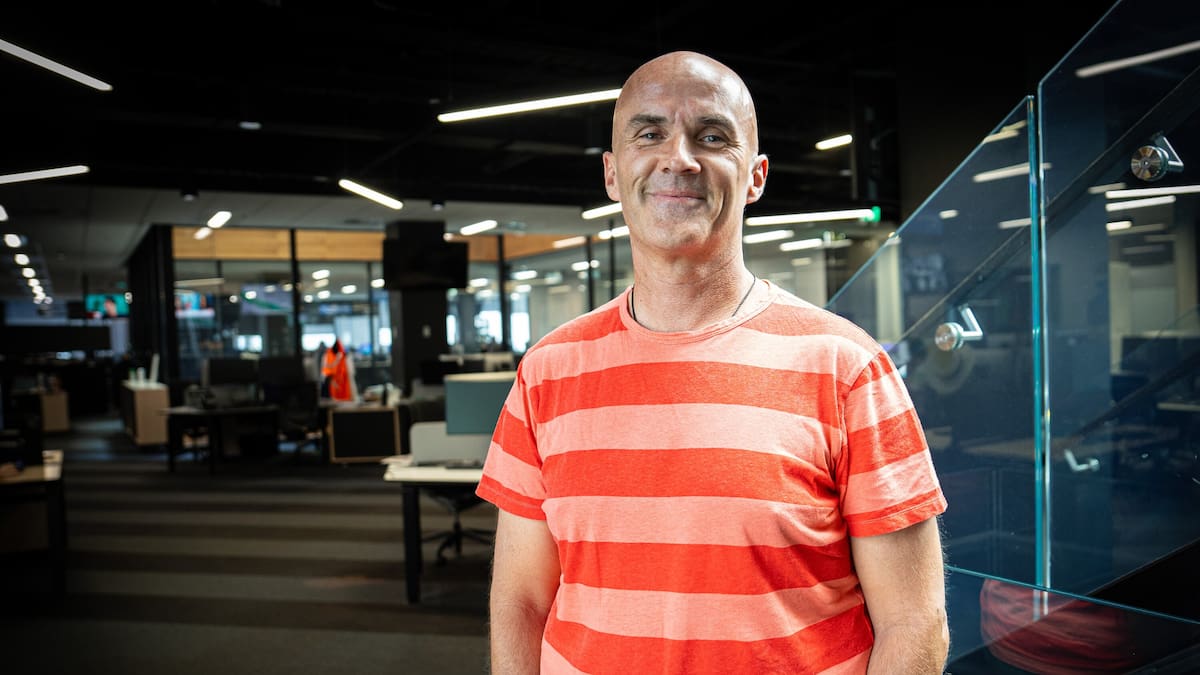Fullers’ chief executive Mike Horne earlier told the Herald the VS-9 was a “proof of concept” for a potential 100-seater order.
Vessev hired America’s Cup and SailGP talent for the design and build of the VS-9 (the “9″ is for 9m).
The carbon fibre laminate VS-9 has partial foiling from 12 knots, reducing pitch-and-roll motion and “takes off” to full-foiling mode waves at 18-19 knots.
Vessev raised $3.3m to build the “VS-9″ prototype, chief executive Eric Laakmann said. Shareholders include Sir Stephen Tindall, Icehouse Ventures, Blackbird Ventures, and Port of Auckland. The start-up also received a $500,000 grant from the Government’s Low Emission Transport fund in mid-2023.
The first VS-9 in the water (the one the Herald was on today) was supposed to be a prototype only but performed so well that Fullers decided to put it into commercial operation, Laakmann said. An initial eight-passenger configuration will shortly be upgraded for 10.
Fullers has bought a second VS-9, which will cost around $1m to build and be in the water before mid-year, Laakmann said.
Just caught the VS9 in the wild (from the back of a distinctly non-silent. non-electric Fullers ferry) https://t.co/1aF0mFOiam pic.twitter.com/dSmj78HzKw
— Chris Keall (@ChrisKeall) September 11, 2024
The current engine generates a fair bit of jet-like noise as the boat gets up on its foils – enough to drown out conversation.
Later in the year, the VS-9 will be upgraded to a quieter, custom-made engine that’s also around 15% more efficient Laakmann said.
Vessev was founded in 2017 by engineer and Halter alumnus Max Olson, with an eye on ultimately building large electric ferries for the Cook Strait run.
Olson remains with the firm as chief technology officer, with Laakmann now in the chief executive role and focusing on more incremental steps.
Laakmann says the VS-9 is the first electric hydrofoil certified for use by a private operator (Swedish rival Candela has a pilot running with two public transport operators in its home country and a pilot starting soon in Nevada for its “P12″).
“There are fewer than 100 of these types of vessels in the water and there are only a handful that are commercial,” Laakmann said.
The American was a lead Apple Watch engineer before he and his partner embarked on a sail-around-the-world sabbatical. They arrived in Auckland during the Covid-lockdown era and never left.
Fullers said it had “strong initial sales” for Kermadec but declined to give any figures.
Vessev VS-9 tech specs
- Length: 8.95m
- Weight: 4 tonnes fully loaded
- Power: Battery electric
- Capacity: 10 passengers
- Crew: One skipper
- Top speed: 30 knots
- Cruise speed: 25 knots (55km/h)
- Range: Up to 50 nautical miles (92km) at 25 knots
- Charging: Up to 90kW
- Charging time: 0.8 nautical miles per minute
Source: Vessev, Fullers
Chris Keall is an Auckland-based member of the Herald’s business team. He joined the Herald in 2018 and is the technology editor and a senior business writer.





